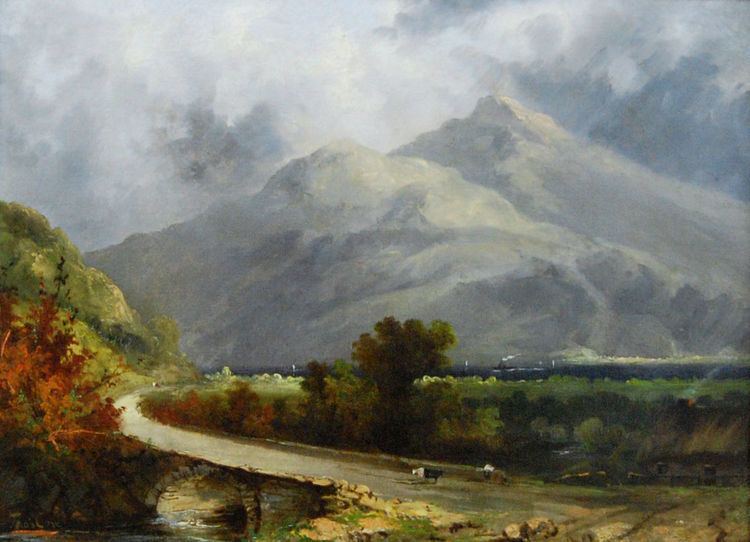Director Lisë Swensson Phone +1 828-327-8576 | Website hickoryart.org Established 1944 | |
 | ||
Location 243 Third Avenue NEHickory, NC 28601 Address 243 Third Avenue NE, Hickory, NC 28601, United States Hours Closed now Friday10AM–4PMSaturday10AM–4PMSunday1–4PMMondayClosedTuesday10AM–4PMWednesday10AM–4PMThursday10AM–4PM Similar Catawba Science Center, Harper House/Hickory History C, GreenHill, Black Mountain College, Blue Spiral 1 Profiles | ||
Hickory museum of art education promo
The Hickory Museum of Art (HMA) is an art museum in downtown Hickory, North Carolina that holds exhibitions, events, and public educational programs based on a permanent collection of 19th through 21st century American art. The museum also features a long-term exhibition of Southern contemporary folk art, showcasing the work of self-taught artists from around the region. HMA is North Carolina’s second oldest museum, established in 1944, Thomas, and Mildred Whitener Coe. Catawba Native Paul Whitener: A Retrospective: Exhibition Catalogue. Hickory, NC: Hickory Museum of Art, 1998. American Alliance of Museums accredited in 1991.
Contents
History
The Hickory Museum of Art was established by Hickory artist Paul Whitener. A football player during his college years, Whitener received a series of sports-related injuries that led him to more actively pursue an artistic career. In 1940, he met portrait painter Wilford S. Conrow at an art exhibition in Asheville, North Carolina, and asked the artist to take him on as a student. Conrow agreed, and would come to be influential in the development of Whitener’s idea for a museum of American art in Hickory. With the moral support of his wife, Mildred “Mickey” Whitener Coe, and funding from local industrialist A. Alex Shuford Jr., Whitener organized an art association in Hickory. With neither a collection nor a headquarters, the Association held its first exhibition in November 1943 in a vacant office building in downtown Hickory. The Hickory Museum of Art was formally dedicated four months later, and Paul Whitener unanimously appointed Director.
Location
In 1984, plans and funds were drawn to renovate Hickory’s old Claremont High School. Two years later, The Arts & Science Center of Catawba Valley opened in the renovated building and provided a permanent location for the museum. Today, it has been incorporated into the SALT Block, a cultural arts complex that houses the Catawba Science Center, Hickory Choral Society, Hickory Museum of Art, Patrick Beaver Library, United Arts Council, and Western Piedmont Symphony.
Permanent Collection
The museum’s permanent collection includes approximately 1,500 art objects, ranging from Hudson River School paintings, American art pottery, Glass Art, High-Speed Photography, and the work of regional artists.
The museum’s collection was established with the purchase of a painting, Burke Mountain, Vermont, by National Academy of Design officer Frederick Ballard Williams, and grew rapidly over the following years. A number of New York artists, like Whitener’s friend and mentor Wilford S. Conrow, spent summers in the mountains of North Carolina, took interest in the small southern art museum, and donated work of their own. In 1954, the museum acquired a group of important works from the collection of National Academy of Design president Hobart Nichols, including pieces by Thomas Cole, Asher Brown Durand, John Frederick Kensett, Worthington Whittredge, Edward Henry Potthast, and Robert Lewis Reid.
More regionally respective, the museum also recognizes the artistic traditions of the Southern United States, North Carolina, and even Hickory’s Catawba Valley region in a long-term folk art exhibition to which the third floor of the building is dedicated. In 2004, the museum acquired more than 150 contemporary Southern folk art objects from the collection of Hickory residents Allen and Barry Huffman. It was the largest collection to be received by the museum since the institution’s establishment, and has grown remarkably in the years since. The artists represented are typically self-taught, removed from the mainstream art world, and represent a facet of art integral to the region’s history. Artists include James Harold Jennings, Richard Burnside, Miles Carpenter, Raymond Coins, Abraham Lincoln Criss, Minnie Adkins, Howard Finster, Russell Gillespie, and Minnie Reinhardt. Traditional Catawba Valley Pottery, including a number of iconic “face jugs”, is also represented.
